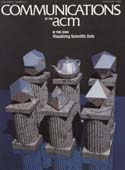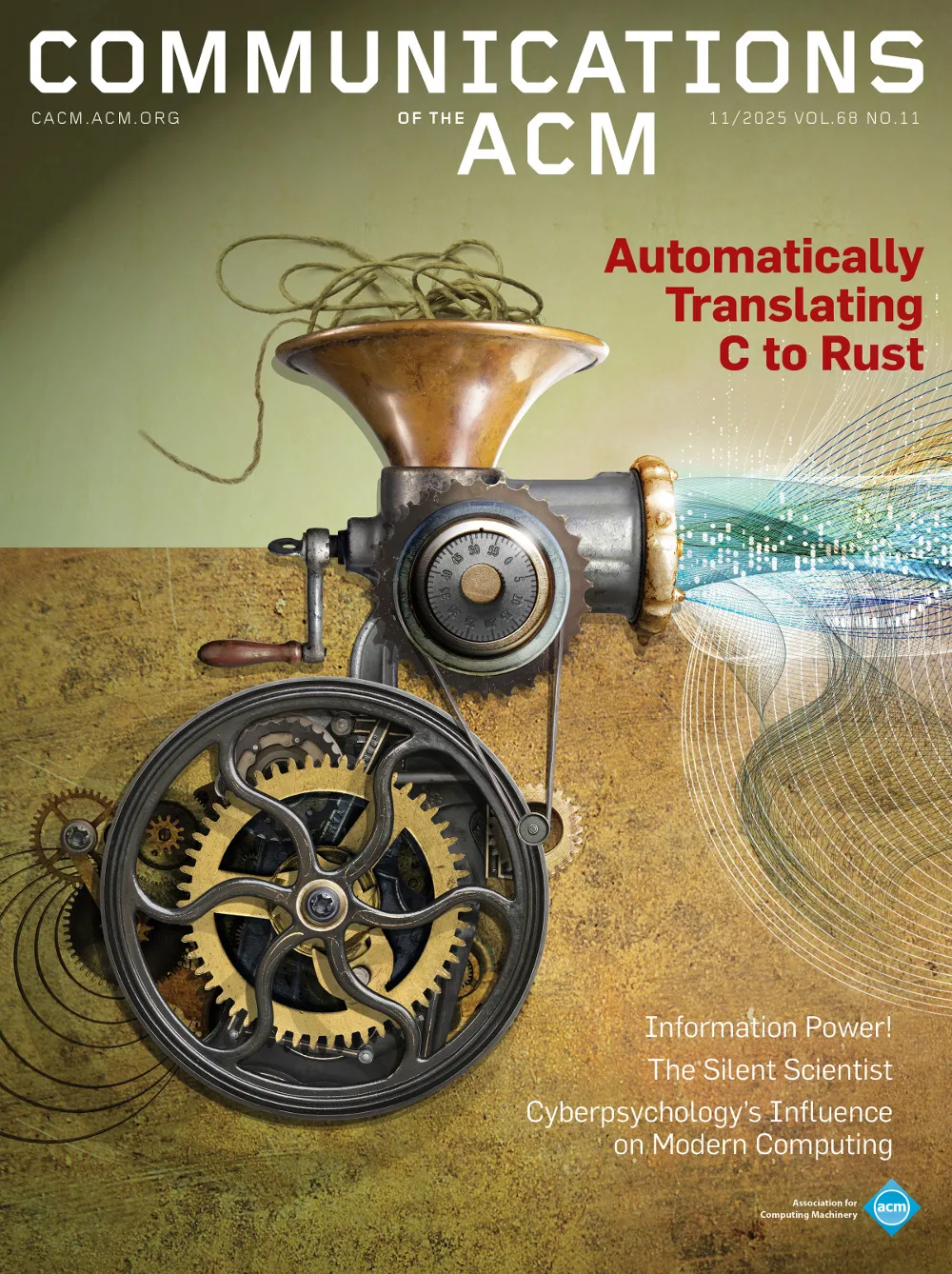February 1988 - Vol. 31 No. 2

Features
The art and science of visualizing data
"I manipulate the laser," the artist said, having exploited laboratory equipment. "This is a parallel pipeline systolic SIMD engine we call the 'Jell-O Engine,'" the animator/straight man announced, but not until he had decimated the practice of ray tracing. And officials from supercomputer centers declared the visualization of scientific data would define a new field, a revolutionary way of doing science.
The 1987 recipient of the Steven A. Coons Award speaks out on the state of the art in computer graphics and what the future can bring the industry under the right influences.
Ray tracing Jell-O brand gelatin
New technology is presented for imaging a restricted class of dessert foods.
Pattern formation and chaos in networks
Chaos theory involves the study of how complicated behavior can arise in systems that are based on simple rules, and how minute changes in the input of a system can lead to great differences in the output. Using computer graphics, the dynamic behavior of chaos-producing networks is explored, and convergence maps reveal a visually striking and intricate class of displayable objects.
Connectionist networks can be used as expert system knowledge bases. Furthermore, such networks can be constructed from training examples by machine learning techniques. This gives a way to automate the generation of expert systems for classification problems.
Computing with structured connectionist networks
The design and applications of massively parallel computational models could lead to dramatic advances in the ability to automate complex tasks such as those found in artificial intelligence.
NPATH: a measure of execution path complexity and its applications
Software engineering is a discipline in search of objective measures for factors that contribute to software quality. NPATH, which counts the acyclic execution paths through a function, is an objective measure of software complexity related to the ease with which software can be comprehensively tested.
A comparison of recently proposed parallel text search methods to alternative available search strategies that use serial processing machines suggests parallel methods do not provide large-scale gains in either retrieval effectiveness or efficiency.
Binomial random variate generation
Existing binomial random-variate generators are surveyed, and a new generator designed for moderate and large means is developed. The new algorithm, BTPE, has fixed memory requirements and is faster than other such algorithms, both when single, or when many variates are needed.



